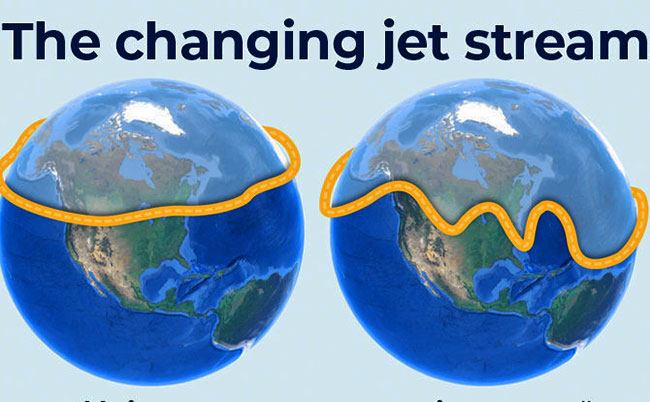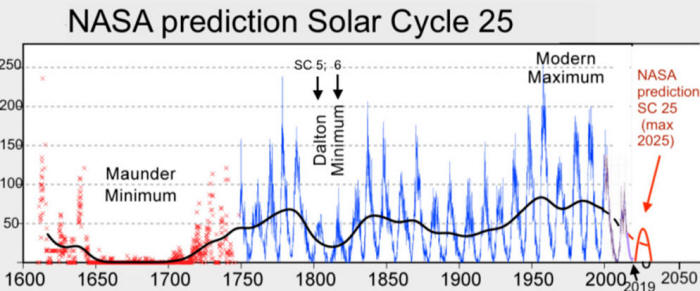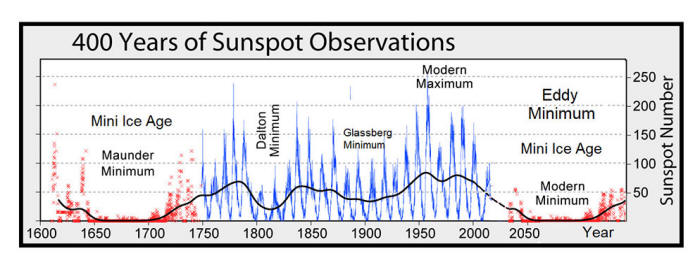|
by Cap Allon
Scene from the Maunder Minimum (1645-1715).
This is exaggerated
further during a Grand Solar Minimum (GSM),
like the one we're entering now, and explains why
regions become unseasonably hot or cold
and others unusually dry or rainy, with the extremes lasting for an
extended period of time.
Zonal flow (left) vs Meridional flow (right) more HERE...
And the Schwander paper, entitled "Influence of solar variability on the occurrence of central European weather types from 1763 to 2009", goes further:
The Sun appears to be slipping into its next Grand Solar Minimum cycle - a multidecadal spell of reduced solar output where the solar disc can be devoid of sunspots for months or even years at a time.
It's this unpredictable
chopping and changing that will hasten the failure of our modern
food production systems - crops will fail, on a large scale, and
famine will quickly ensue.
However, not ALL regions experience the chill.
As with the previous GSM (the Maunder Minimum 1645-1715), areas like,
...actually warm during
bouts of otherwise "global" cooling, NASA reveals the phenomenon in
their Maunder Minimum temperature reconstruction map:
and 1680 (a year within the depths of the Maunder Minimum)
NASA.
The Arctic appears to be warming again - slightly - but in line with the historically low solar activity we're currently experiencing and it's effect on the jet stream, and not due to Man's irrelevant CO2-excretions.
Furthermore, if you remove the Arctic's, Alaska's and S. Greenland's/N. Atlantic's temperature readings from the UAH global lower atmosphere data set, you're left with a dramatically cooler planet.
The COLD TIMES are returning in line with,
Even NASA appear to agree, if you read between the lines, with their forecast for this upcoming solar cycle 25 seeing it as "the weakest of the past 200 years," with the agency correlating previous solar shutdowns to prolonged periods of global cooling.
Prepare accordingly - learn the facts, relocate if need be, and grow your own...
|






